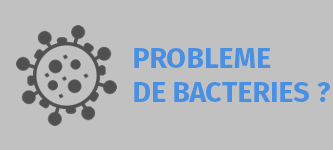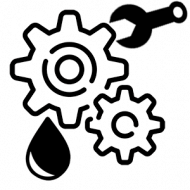| » |
Que recherchez-vous ?
Water filtration: What to do to filter drinking water?
Clean, potable water is essential for survival. A human can only survive three days without water. Access to clean water is important for our health, but unfortunately not all water sources are pure. Worldwide, only 1% of the water on earth can be used for human consumption. Water can be contaminated with bacteria, viruses and chemical pollutants, which can lead to serious illnesses. It is therefore necessary to go through a water filtration to protect you and your family. What should you look for in water to make it pure? What types of filtration should we install to preserve our health?
History of water filtration
Thousands of years ago, people often settled near water, to avoid walking too long. Well, river and groundwater that was untreated could be used as drinking water for washing and drinking. Even today, this still happens in some developing countries, but it is very rare.
During ancient Greek and Roman civilizations, they used aeration basins to purify water. The Romans also consumed rainwater for the first time. The water was boiled or was filtered with cotton cloths and sand filters to obtain drinking water. Alas, many fell ill and died.
What kinds of problems can be found in water?
The main water pollution comes from micro-organisms. It can be algae, but also fungi and parasites. At best, they temporarily target your digestive system. At worst, they can be disastrous for your long-term health. There are three main types of microorganisms:
- Protozoa (Cryptosporidium parvum and Giardia lamblia). They are relatively large parasites. As they are very visible, they are easily filterable with a carbon cartridge.
- Bacteria (such as E. Coli and Salmonella) are slightly smaller than protozoa, but still visible to the naked eye. They can be removed from water with a filter (0.2 to 5 microns).
- Viruses (such as hepatitis A and norovirus) are much smaller than bacteria and protozoa. You can only remove them with a 0.02 micron ultra-filtration membrane or with a reverse osmosis unit. Or finally, by boiling the water.
The second pollution is chemical contamination from intensive agriculture, nitrates or pesticides. He can eliminate it either by cartridges, if the rate is very low, or by treatment with a structural bottle adapted to the flow rate in service.
What are the possible sources of water to make it drinkable?
Groundwater
This water is found in natural springs or wells that may be thousands of years old. The soil and rock layers have naturally filtered the water without any additional treatment. The water may be high in dissolved solids such as magnesium sulphates, iron or manganese.
Lakes and reservoirs
These lakes and reservoirs are located in the headwaters of rivers, above any human habitation and often surrounded by natural barriers that protect the water from pollution. Some bacteria, protozoa and algae are present, but a simple suitable UV filter is sufficient. This water can often also have a low pH.
Rivers, canals and water reserves
Surface waters often contain a large amount of chemical contaminants, bacteria, but also algae and various dissolved components. It will be necessary to install a water filtration after carrying out a physico-chemical and bacteriological analysis.
Rainwater
Collecting rainwater for storage is a good way to obtain reliable drinking water, provided that the installation is isolated from the outside with controlled filtration up to the entrance of the house or Tiny-house .
Seawater
Being salty, the water must be treated, ridding it of its salt and other elements by distillation or reverse osmosis.
Surface water
It is fresh water on the surface that comes from controlled and treated canals, such as the Canal de Provence, to provide water to farmers and growers for their daily needs. It is also used, after filtration by cartridges with UV, as drinking water for individuals.
How to purify water for the house?
With good filtration with cartridges or filter bottles, you are always guaranteed to have 100% pure drinking water. Filtration using a water filter remains the most effective method. You are not dependent on chemicals or electricity. And it doesn't take long.
How to choose your water filter?
You have the choice between a water filter system behind the water meter or under your kitchen sink. This improves the quality and taste of tap water and reduces scale on household appliances for a number of types. The taste of tea and coffee is also purer. It's also an eco-friendly choice because by drinking filtered tap water, you don't need plastic water bottles.
Types of filters available
In this category, we are going to present you all the types of water filters for your home, Tiny-house and even motorhome to solve the problems related to the quality of the water that you will find.
- Sand filter
- Straw filter
- UV filter
- Water purifier
- Ultra-micro filtration filter
- Reverse Osmosis
Clean, drinkable water is essential to ensure the good health of you and your family, whatever the weather conditions. Water is an absolute necessity, especially in emergency situations, in case of long-lasting drought. So be prepared and make sure you have a water filtration system in your home in addition to a water supply. That way, you're not dependent on disasters, lockdowns, or water bottle shortages. This way you can provide for your basic needs yourself.

































































